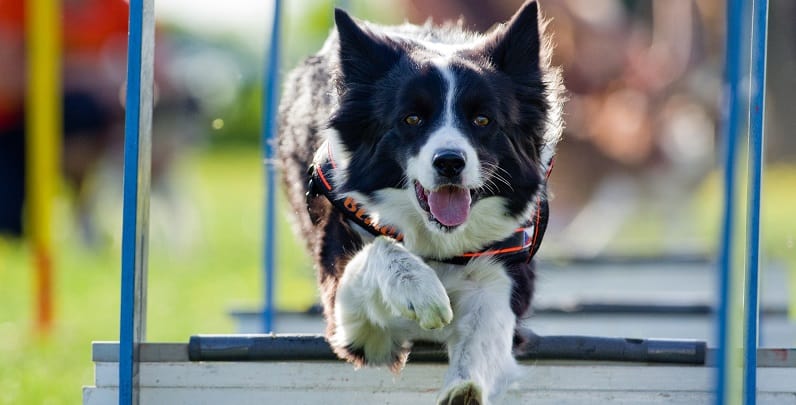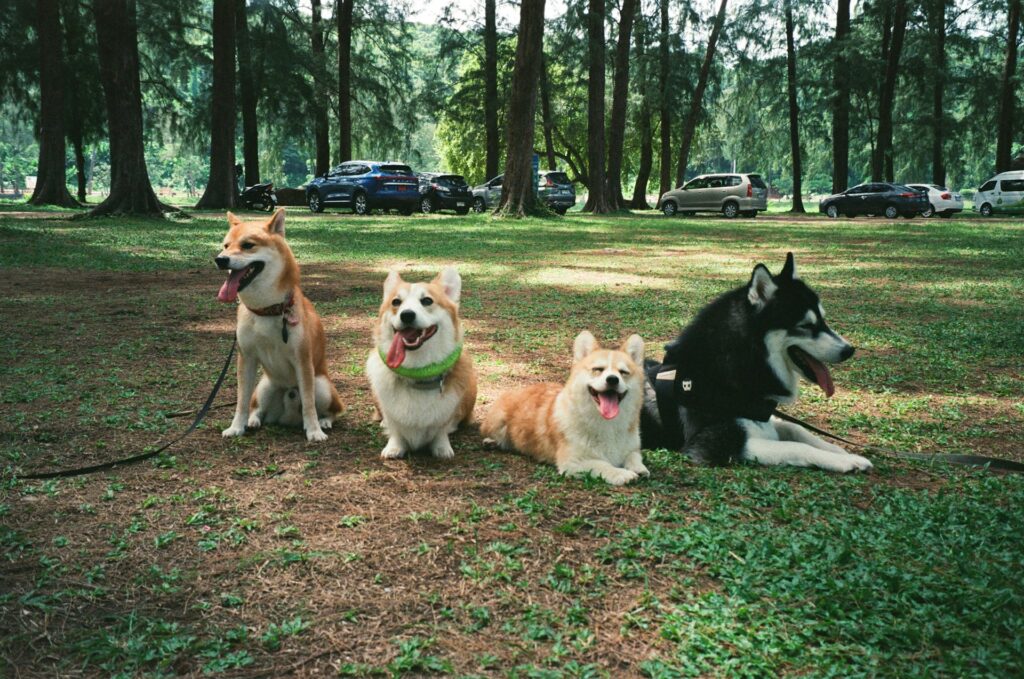Are you thinking about getting protection dog training but don’t know where to begin or what it’s all about?
With more worries about safety, learning about dog training for protection is key.

Protection dog training isn’t just about making a dog aggressive. It’s about raising a loyal friend who knows how to act when danger comes.
This training mixes obedience, social skills, and special protective moves. It’s a challenging but fulfilling journey.
Key Takeaways
- Understanding the basics of protection dog training
- Recognizing the importance of professional dog training courses
- Learning how to find reputable protection dog training near you
- The role of obedience and socialization in protection training
- What to expect from a protection dog training program
The Purpose and Ethics of Protection Dog Training
Understanding the purpose and ethics of protection dog training is key. It’s a complex field that goes beyond just training techniques. It also involves knowing the legal and ethical sides.
What Is Protection Dog Training?
Protection dog training teaches dogs to defend their handlers in danger. It uses obedience and defensive moves. The aim is to make a dog that can face threats but stay in control.
The Difference Between Protection and Aggression
It’s important to know the difference between protection and aggression. Protection is a controlled response to a real threat. Aggression is unprovoked anger. Training should help dogs tell these apart.

Legal and Ethical Considerations
Legal and ethical issues are big in protection dog training. It’s about knowing your rights and duties as a dog owner.
Liability Issues
Owners need to think about legal risks with a protection-trained dog. They must know local laws and the risk of injury lawsuits.
Responsible Ownership
Being a responsible owner is crucial. It means training well and caring for your dog. Important points include:
- Proper training and socialization
- Regular exercise and mental stimulation
- Following local laws and rules
By focusing on these, owners can make sure their training is both good and right.
Selecting the Right Candidate for Protection Work
Choosing the right dog for protection work starts with finding the right candidate. This means looking at breed, temperament, and health. The right dog can be a loyal friend and a great protector with the right training.
Breed Considerations
Some breeds are naturally better at protection work. This is because of their history and natural traits.
Traditional Protection Breeds
Breeds like German Shepherd, Belgian Malinois, and Rottweiler are often used for protection. They are strong, loyal, and smart.
Non-Traditional Options
While not as common, breeds like Doberman Pinscher and Giant Schnauzer can also be great protectors. They just need the right training.
| Breed | Typical Traits | Training Potential |
|---|---|---|
| German Shepherd | Loyal, Intelligent | High |
| Belgian Malinois | Energetic, Protective | High |
| Doberman Pinscher | Alert, Fearless | Moderate to High |
Temperament Assessment
A dog’s temperament is very important. Dog training classes near me can help figure out if a dog is right for protection work. A balanced temperament is essential for success.
Age and Health Factors
Age and health are also key. In home dog training near me or dog board and train near me services can help with these. They can guide you in making the right choice.
Essential Equipment for Protection Dog Training
To train a protection dog well, you need the right gear. This gear makes training better and keeps everyone safe.
Training Gear
Training gear is key for teaching obedience, agility, and protection. It includes:
Leashes and Collars
There are various types of leashes and collars designed for training. Training collars help manage and correct a dog’s behavior, while long leashes allow dogs to move more freely during sessions.
Long Lines and Harnesses
Long lines and harnesses are useful for distance training. They provide handlers with safe control over dogs in a range of different situations.
Protective Equipment
Protective gear keeps dogs and handlers safe during training. It includes:
Bite Sleeves and Suits
Bite sleeves and suits protect handlers from bites. They are made tough for training.
Muzzles and Barriers
Muzzles and barriers control dog behavior. They keep everyone safe and prevent bad interactions.
Reward Systems
Rewards are important for training. They motivate dogs and teach good behavior. Treats, praise, and play are common rewards.
A famous dog trainer says, “A good reward system is crucial for a reliable protection dog.”
“The equipment used in protection dog training is not just about the tools themselves, but how they are used to shape the dog’s behavior and performance.”
Using the right equipment well makes dog training better. Handlers can improve their dog’s skills a lot.
Fundamentals of Dog Training for Protection Work
Protection dog training needs obedience, clear communication, and a steady training plan. A good training program focuses on these basics. It’s key for a dog to be reliable in protection work.
Obedience as the Cornerstone
Obedience is the base of all protection dog training. A dog that listens well can handle stress better. Commands like sit, stay, and heel are very important.
More advanced training helps the dog follow commands in different situations.
Establishing Clear Communication
It’s important for the dog and handler to talk clearly. This means using words and body language. The handler must tell the dog what to do clearly.
The Importance of Consistency
Being consistent is crucial for dog training. It means using the same methods and commands.
Training Schedules
Having a set training schedule is helpful. It keeps the dog’s learning fresh. Training should have clear goals.
Command Vocabulary
Using the same commands helps the dog understand better. The 7 most common dog commands are key. Using them the same way builds a strong bond.
Focus on obedience, clear communication, and consistency. This builds a strong base for protection training. Dog training courses and dog training at home help improve skills.
Phase1: Socialization and Environmental Conditioning
Effective protection dog training starts with socialization and environmental conditioning. This stage is key for a dog that’s obedient, controlled, confident, and calm. It prepares them for many situations and places.
Controlled Exposure Techniques
Controlled exposure introduces dogs to different sounds, sights, and smells in a safe way. It prevents them from getting overwhelmed. Gradual exposure is important, starting with small amounts and slowly increasing.
Building Confidence in Various Settings
It’s vital for a protection dog to feel confident in many places. Training them in various locations helps them understand they must follow commands everywhere.
Urban Environments
In cities, dogs face many sounds like car horns and sirens. They must stay focused. Training in cities prepares them for the fast and chaotic city life.
Natural Settings
Natural settings offer different challenges like varied terrain and wildlife. Training in these places makes dogs adaptable and responsive to commands, even in less controlled situations.
Overcoming Environmental Challenges
Dogs may still face challenges despite training. These can include aggressive animals or extreme weather. Training should teach them to stay focused on the handler and follow commands well.
| Environmental Challenge | Training Strategy | Expected Outcome |
|---|---|---|
| Aggressive Animals | Desensitization and Counterconditioning | Reduced reactivity to other animals |
| Extreme Weather | Gradual Exposure | Increased tolerance to weather conditions |
| Loud Noises | Sound Desensitization | Reduced startle response |
By focusing on socialization and environmental conditioning, handlers can create protection dogs. These dogs are skilled, confident, and reliable in many situations.
Phase2: Advanced Obedience for Protection Dogs
Advanced obedience training is a big step for protection dogs. They learn to follow commands better, even when things get tough.
Off-Leash Control
Off-leash control is key for protection dogs. It lets handlers control them without a leash. Training makes the dog listen to commands from far away.
Distance Commands
Distance commands help handlers control dogs from a distance. This is important for keeping dogs safe while still in control.
Recall Under Distraction
Recall under distraction is very important. Dogs learn to come back to their handlers, even with distractions around.
Stay Commands with Temptations
Stay commands with temptations test a dog’s willpower. Trainers use treats to see if the dog can stay put.
| Command | Description | Training Tip |
|---|---|---|
| Recall | Dog returns to handler on command | Use positive reinforcement |
| Stay | Dog remains in position | Gradually increase duration |
Working Through High-Stress Situations
Protection dogs need to handle stress well. They learn to stay calm and listen in tough situations.
“A well-trained protection dog is not only a guardian but also a reflection of responsible dog ownership.” – Expert Dog Trainer
With advanced training, protection dogs become more reliable. They offer better security for their handlers.
Phase3: Bite Work Fundamentals
The third phase of protection dog training is key. It helps dogs learn to act right when faced with threats. This stage builds on earlier skills, adding advanced techniques for protection.
Introduction to Bite Equipment
Introducing bite equipment is a big step in a dog’s training. Dogs learn about tools like bite sleeves and suits. This helps them feel good about the gear, ready for harder training.
Building Proper Bite Technique
Teaching a dog to bite right is crucial. It’s about learning to grip and release on command. This makes the dog effective and in control.
Grip Development
Grip training makes a dog’s jaw stronger. It helps them hold onto targets better. Exercises are used to improve grip strength.
Target Discrimination
Target training teaches dogs to choose the right targets. This ensures their aggression is aimed correctly.
Developing Bite Commitment
Building bite commitment means teaching dogs to bite fully. They learn to bite without hesitation. This makes their responses strong and decisive.
Release Commands and Control
Release commands and control are vital. They let handlers stop the dog after a bite. Dogs learn to release targets quickly, keeping handlers in charge.
Phase 3 of protection dog training gives dogs advanced skills. They become valuable to their handlers. With dog training courses focusing on bite work, handlers can prepare their dogs for threats.
Phase4: Threat Recognition and Response Training
In Phase 4, we work on making dogs better at spotting and reacting to dangers. This is key for a protection dog to know when to act and when not to.
Teaching Threat Discrimination
Teaching dogs to spot real threats and act is called threat discrimination. They learn this by facing different situations during training.
Visual Cues
Visual cues are important for dogs to learn threats. They are trained to see signs like aggressive postures or gestures.
Behavioral Indicators
Dogs also learn from actions, not just looks. They learn to recognize loud noises or aggressive behavior as threats.
Alert Behaviors
Alert behaviors help dogs warn of dangers early. They learn to bark or become alert when they see a threat.
Controlled Aggression
Controlled aggression is key in protection dog training. It teaches dogs to be aggressive but in a controlled way.
Barking vs. Biting Responses
Dogs learn to bark or bite based on the situation. Barking warns, while biting is for more serious threats.
Here’s a table showing the main parts of threat training and their benefits:
| Training Component | Description | Benefit |
|---|---|---|
| Visual Cues | Recognition of aggressive posturing or threatening gestures | Enhanced threat detection |
| Behavioral Indicators | Recognition of loud noises or aggressive behavior | Improved situational awareness |
| Alert Behaviors | Barking or becoming alert upon perceiving a threat | Early warning system |
Here’s an image showing threat recognition:
By focusing on these areas, Phase 4 of protection dog training makes dogs obedient and ready to face threats.
Phase5: Scenario-Based Protection Dog Training
This training phase is the final step. It focuses on real-life situations. Dogs learn to handle different scenarios.
Home Invasion Scenarios
This training simulates home invasions. Dogs learn to defend their home and family.
Key elements of home invasion training:
- Simulated intruder scenarios
- Defending family members
- Protecting the home perimeter
Vehicle Protection Training
This training makes dogs alert and defensive in vehicles. It’s important for families who travel with their dogs.
Vehicle protection training includes:
- Defending against threats near the vehicle
- Remaining calm during travel
- Responding to commands while in the vehicle
Public Space Protection
This training is for dogs in public. It teaches them to handle crowds and threats.
Crowd Navigation
Dogs learn to stay focused in crowds. They avoid getting distracted or aggressive.
Threat Assessment in Public
Dogs are trained to spot threats in public. This includes suspicious people or loud noises.
| Training Scenario | Key Skills | Training Focus |
|---|---|---|
| Home Invasion | Defending home and family | Simulated intruder scenarios |
| Vehicle Protection | Vigilance and defense | Defending against threats near the vehicle |
| Public Space Protection | Crowd navigation and threat assessment | Staying focused amidst distractions |
By the end of this training, dogs are ready for real-life situations. They become great companions and protectors.
Working with Professional Protection Dog Trainers
To make sure your protection dog works well and safely, you need a professional trainer. This field needs a lot of knowledge about dogs, their behavior, and how to train them.
Finding Qualified Trainers
Looking for a trainer? Make sure they have the right skills and experience. You can search for “dog training classes near me” or “in home dog training near me” to find local experts.
Certifications to Look For
Good trainers have certifications from known groups. These show they’ve had deep training and follow the right rules.
Red Flags to Avoid
Watch out for trainers who promise too much or use bad methods. It’s a warning sign if they’re not clear about how they train or can’t give references.
What to Expect from Professional Training
Professional training covers a lot, like obedience and learning to recognize threats. It might include “dog board and train near me” services, where the dog gets a lot of training.
Cost Considerations
The price of training varies a lot. It depends on the trainer’s experience, the dog’s breed and age, and the training’s complexity. Always talk about the cost first and know what you’re getting.
Common Challenges in Protection Dog Training
Training a protection dog comes with many challenges. Trainers and handlers need to know these to prepare their dogs well.
Fear-Based Responses
Fear can stop a dog from being a good protector. Desensitization and counterconditioning help fix this.
Inappropriate Aggression
Some dogs get too aggressive when they shouldn’t. Finding out what makes them aggressive is key.
Trigger Identification
Finding out what makes a dog aggressive is the first step. Trainers watch and record to find patterns.
Behavior Modification Techniques
After finding triggers, training techniques can help. This includes exposing the dog to triggers slowly and rewarding calm behavior.
Inconsistent Performance
Training can be hit-or-miss. This can be due to unclear communication, bad training, or distractions.
Handler Errors and Corrections
Handlers are crucial in training. Mistakes by handlers can hurt a dog’s training. Common mistakes include unclear commands and not giving clear feedback. Fixing this means training handlers better and strengthening the bond between them and their dogs.
Maintaining and Advancing Protection Skills
Keeping a protection dog’s skills sharp is a never-ending task. It needs commitment and the right training methods. A good protection dog is not just trained once but is always practicing and learning.
Regular Practice Routines
It’s key to practice often to keep a protection dog’s skills sharp. This includes:
- Daily Drills: Simple exercises that boost basic obedience and protection skills.
- Weekly Scenarios: Training that mimics real-life situations, helping the dog react right in different settings.
Skill Proofing Exercises
Skill proofing tests a dog’s skills in various and tough situations. It checks if the dog can handle new places, people, and distractions well.
Advanced Certification Options
Getting advanced certifications proves a protection dog’s skills and the handler’s. Many groups offer programs that test the dog’s protection work, obedience, and how it handles threats.
Competitive Protection Sports
Competitive protection sports help keep a dog’s skills sharp. These events mimic real-world situations. They let handlers see how their dog stacks up against others.
By doing regular practice, skill proofing, and getting advanced certifications, handlers keep their dogs ready. For those looking into dog training courses or dog training books, there’s a lot of help out there.
Conclusion: Responsible Ownership of Protection Dogs
Owning a protection dog is a big job. It needs a lot of knowledge about dog training and a strong commitment to being a good dog owner. This article has shown that training a protection dog is not just about teaching them to be mean. It’s about making them a well-rounded friend who can protect you but also listen and obey.
Starting with the basics of dog training is key. This includes socializing, teaching obedience, and doing bite work. Training at home can work, but it’s very important to also work with professional trainers. This way, your dog gets the best training possible. By learning the basics and keeping up with training, you can raise a dog that is both good at protecting and loving.
Being a responsible dog owner is crucial for a protection dog to fit well into your family. This means doing regular practice, doing skill proofing exercises, and keeping up with training. This way, your protection dog stays a valuable and loved member of your family.
FAQ
What is protection dog training, and how does it differ from regular dog training?
Protection dog training teaches dogs to defend their owners and property. It’s different from regular training because it focuses on defensive skills.
How do I find dog agility training near me?
Look online for “dog agility training near me.” You can also ask local dog training centers and pet stores for advice.
What is the best dog food for my protection dog, and is Gravy Train dog food a good option?
The best food for your dog depends on their breed, age, and health. Gravy Train might work, but talk to a vet to find the best diet.
How can I address aggression issues in my dog, and are there aggressive dog training or dog aggression training programs near me?
For aggression issues, talk to a professional dog trainer. Search online for “aggressive dog training near me” to find help.
What are the benefits of dog board and train programs, and how can I find one near me?
Dog board and train programs offer intense training. Search for “dog board and train near me” to find one.
How can I train my dog at home, and what are the basics of dog training?
Start with basic commands like “sit” and “stay.” Use treats and praise for positive reinforcement. Teach housebreaking and socialization too.
What are the 7 most common dog commands, and how can I teach them to my dog?
Teach “sit,” “stay,” “come,” “down,” “shake,” “stay close,” and “leave it.” Use treats and praise for positive reinforcement.
What is the 777 rule for dogs, and how can it help with dog training?
The 777 rule isn’t a known training principle. But, a daily routine helps with training and your dog’s well-being.
Are there dog training books, courses, or online resources that can help me with protection dog training?
Yes, there are many resources for protection dog training. Look for books and courses from certified trainers and dog training organizations.
Can I use a dog training app to help with protection dog training, and are there any recommended apps?
Dog training apps can help, but they’re not a full replacement. Look for reputable apps and talk to a trainer about their use in protection training.
Are there dog training programs on TV that can help with protection dog training?
Some TV programs cover protection training. But, always get hands-on training and advice from a professional trainer.
How can I find in-home dog training or protection dog training near me?
Search online for “in-home dog training near me” or “protection dog training near me.” Look for local trainers who offer in-home services.









